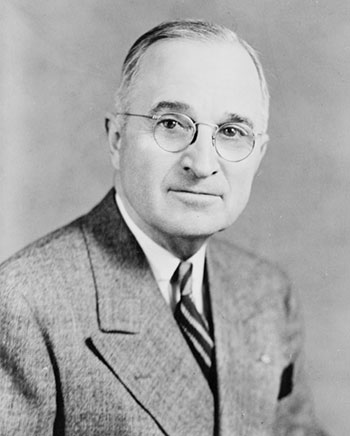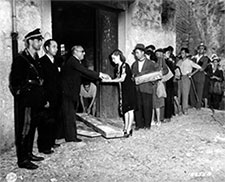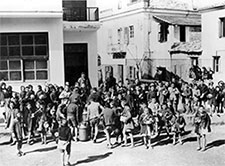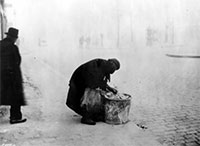At the beginning of the Cold War, the United States and the Soviet Union had taken distinct political and ideological stances. The United States saw the communist government of the Soviet Union as a threat to the democratic ideals of the United States and its allies.
President Harry S. Truman announced the Truman Doctrine, his policy to prevent the expansion of the influence of the Soviet Union. The policy was also known as containment.
![]() Click on the container below to learn more.
Click on the container below to learn more.

Source: Harry Truman, Library of Congress
Read the excerpt below from the Truman Doctrine and answer the questions that follow in your notes.
"At the present moment in world history nearly every nation must choose between alternative ways of life. The choice is too often not a free one. One way of life is based upon the will of the majority, and is distinguished by free institutions, representative government, free elections, guarantees of individual liberty, freedom of speech and religion, and freedom from political oppression. The second way of life is based upon the will of a minority forcibly imposed upon the majority. It relies upon terror and oppression, a controlled press and radio, fixed elections, and the suppression of personal freedoms. I believe that it must be the policy of the United States to support free peoples who are resisting attempted subjugation by armed minorities or by outside pressures. I believe that we must assist free peoples to work out their own destinies in their own way. I believe that our help should be primarily through economic stability and orderly political process."
-President Harry S. Truman, March 12, 1947 in an address recommending aid to Greece and Turkey.
Interactive popup. Assistance may be required.
Truman is asking Congress to approve financial assistance to Greece and Turkey.
Interactive popup. Assistance may be required.
Truman is referring to a life under democratic ideals and one under communist ideologies.
Interactive popup. Assistance may be required.
They were of interest to the United States because they were both being threatened by communism and Truman did not want the Soviet Union to control either country. By giving these countries financial assistance, the United States could help them become independent democracies.
World War II left many European countries in a destructive and poverty-stricken state. Property damages left many homes destroyed and many businesses unable to function. Food and clean water were in short supply, which caused hunger and starvation in many European countries. The images below illustrate European countries after World War II ended.
 |
 |
 |
| Italian citizens receive food in one of the many breadlines sponsored by allied forces. | Children in a school in Greece wait for lunch from United Nations relief workers. | A woman is digging in a trash can looking for food. |
To extend the policy of containment, a policy was created called the Economic Assistance Act of 1948. Created with the help of Secretary of State George Marshall, this act was a part of the United States’ comprehensive program to help European countries rebuild after the war.
The Marshall Plan, as it was called, economically aided European countries and stimulated the U.S. economy.
![]() Click on the money bag below to learn more.
Click on the money bag below to learn more.
![]() Read the following statements and determine if each statement describes the Truman Doctrine, The Marshall Plan, or both. When the statement appears, click on the correct location on the Venn diagram.
Read the following statements and determine if each statement describes the Truman Doctrine, The Marshall Plan, or both. When the statement appears, click on the correct location on the Venn diagram.
Sources for images used in this section, as they appear, from top to bottom: